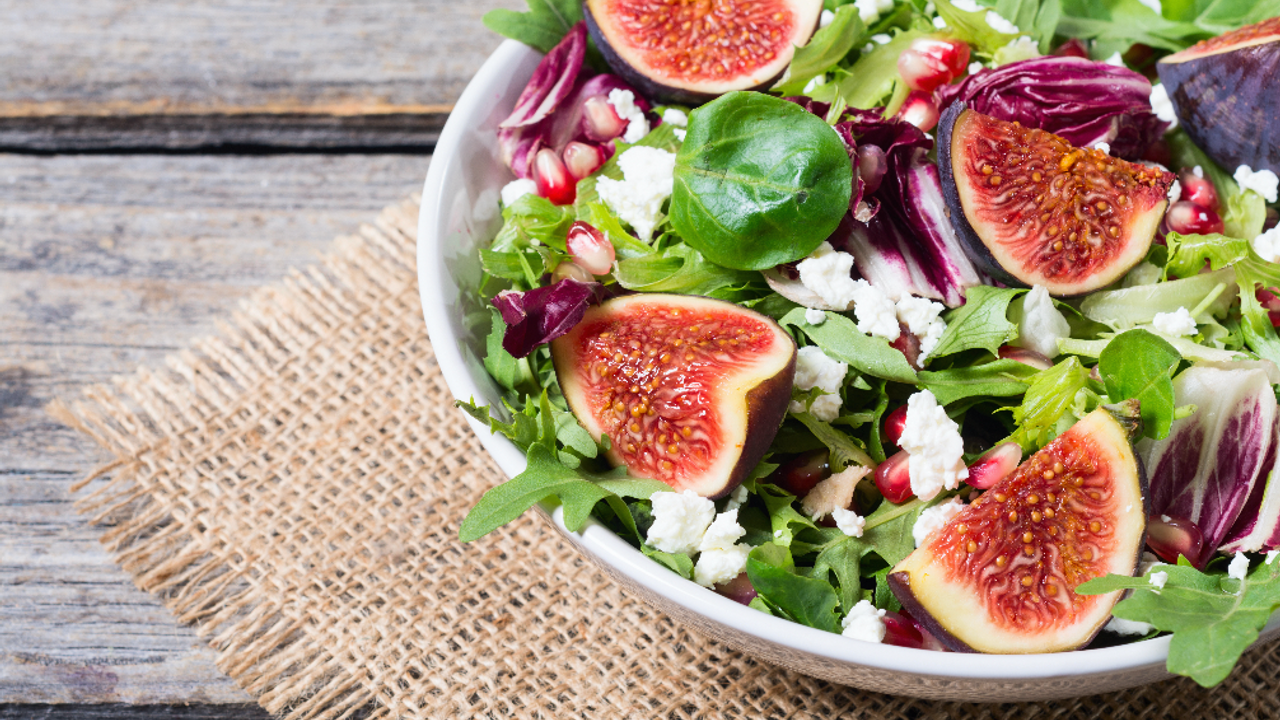How to make the perfect Summer salad

This week we’re honing in on the vital elements required to create the perfect salad, to help guide you to mastery with this exceptionally underrated life skill.
The difference between a good and cracking Summer salad is nominal in terms of the time and effort required, yet when it comes to indulging – they’re worlds apart.
Mastering the art is pretty straight-forward, even for non-cooks. All it requires is some know-how around contrasting and balancing flavours, colours and textures – and grasping the critical importance of using fresh ingredients.
In Summer, salad can be so much more than an assortment of greens (not that there’s anything wrong with a peppery green side and zingy vinaigrette)! At this time of year, salads can hold their own as hearty standalone meals.
It doesn’t need to be complicated
Oftentimes, simplicity trumps complexity. Pairing a perfectly ripe fruit with a soft cheese and something for crunch is enough to satisfy and delight.
The sweet and savory combination is a hallmark of Summer salads and a classic format when you’re pressed for time or lacking energy. Throughout the rest of the year, preparing great food takes marginally more effort – so don’t miss your chance to get off so lightly!
My favourite fruit + cheese combinations:
- Watermelon, Greek feta and mint or coriander with lemon, lime or balsamic
- Fresh or grilled peaches or nectarines with burrata (or buffalo mozzarella) and some fresh microgreens and toasted nuts or seeds
- Strawberries, Danish feta, rocket and red onion with balsamic reduction
Building the perfect Summer salad
Choose your star ingredients: when it comes to creating a satisfying and balanced meal, I tend to think primarily in terms of macronutrients. A protein (cheese, meat, fish or egg), a carbohydrate (fruit, root or grain) and some leafy greens or herbs tend to form the bulk of my Summer salads.
When selecting your ingredients, think contrast: creamy and crunchy, wet and dry and an array of flavours: sweet, savory, salty and sour.
And the best kept secret when it comes to preparing a truly great dish is to start with the freshest, top quality produce you can source. Plan to make your salad within a day or so of shopping as this is when your ingredients are at their best. With softer produce like avocados, aim to have them ripe but still firm.
Greens can be somewhat pedantic about their conditions, so it’s good to consider how and when you’ll be serving your dish. If you’re dining alfresco at a picnic or barbeque, your salad will require a bit of longevity. So, don’t opt for greens that wilt easily, like spinach or watercress. The best bet is to keep the greens to a minimum and use some flavourful herbs instead.
1. Ensure crunch factor: this is always front and centre on my mental checklist. Which ingredient will add that generous crunch to help balance the softer textures of fruit and cheese? Sometimes it’s fresh produce like cucumber or radish, otherwise toasted nuts and seeds are great, or savoury options like croutons, toasted breadcrumbs, bacon, parmesan crisps or even tortilla chips for a more Mexican inspired salad.
2. A little extra flavour: at this time of year I like to let the fresh produce speak for itself, but there’s no harm in adding an extra hit of flavour.
A little crushed garlic (or store-bought garlic paste if you must) adds a whole new dimension to some of the classic salads, as does a little finely grated ginger.
And nothing compares to a generous handful of freshly picked herbs – my favourites are basil, mint, dill, tarragon and coriander – but I also love finely shredding some kaffir lime leaf, lemongrass or lemon myrtle and stirring it through for some extra zest when the mood strikes.
Use a sharp knife when preparing your herbs or you’ll risk bruising the leaves. If your kitchen is missing one of these: promptly rectify. In the meantime, it’s best to simply tear the leaves of softer herbs into your salad instead
3. To dress or leave naked? The best part about using juicy, flavouful Summer fruits is that they bring acidity and moisture to the salad, by default. At this time of year, sometimes all you need is a pinch of salt and a dash of oil or balsamic. When dressing your salad, the purpose is to lift and highlight the existing flavours – not to overpower them. Light, well-balanced vinaigrettes can help bring the salad together.
4. Presentation: Layering a salad on a large platter (or even on individual plates) instead of tossing it in a bowl can look a lot more visually appealing. And remember that unless you’re dealing with a heavier potato salad or similar, it’s best to dress your salad at the last moment to preserve its vibrancy.
Well, I hope this has you inspired to think outside the box come your next salad prep. A delicious fruit and cheese salad recipe coming next week to finish the series.
